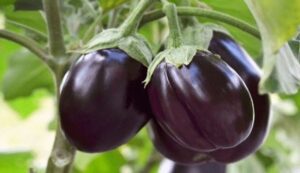Brinjal Cultivation: Farmers will earn lakhs by cultivating this vegetable, know the method of cultivation here
Brinjal Cultivation: Farmers are finding that growing brinjal is a lucrative cash crop. You can grow this common veggie almost anywhere. The market is always in need of brinjal. The yield of this crop lasts for seven to eight months after planting, which is its greatest benefit to farmers. Additionally, this provides farmers with a steady income, and since brinjal production is inexpensive, farmers may benefit from a favorable market price. The benefits of this crop are particularly evident for small and medium-sized farmers.

This farmer is making a healthy profit in relation to the expense of growing brinjal. For this reason, he has been growing brinjal for many years and earning thousands of rupees. By growing brinjal with other crops, farmer Lovelesh, who lives in Ganjaria village in the Barabanki region, makes a lot of money from a single harvest.
Growing vegetables generates revenue
We have been growing veggies for around three or four years, according to farmer Lovelesh Kumar, who does the cultivation. This comprises radish, brinjal, bitter gourd, tomato, and so on, where we made a healthy profit. I now have around two brinjal bighas planted. The unique quality of brinjal is that there is always a market for it. It sells a bit expensively as a result. When considering the expenses of agricultural farming, one bigha costs fifteen thousand rupees. For a single crop, the profit ranges from one to one and a half lakh rupees. The crop is accessible for around seven to eight months after the first sowing. Its cultivation requires careful attention. This crop has a significant risk of disease.
Making millions of dollars growing brinjal
It is really simple to grow. Initially, a brinjal seed nursery is set up. The land is then thoroughly plowed two or three times before being sprinkled with cow dung manure. The land is then flattened, and brinjal plants are planted far apart and given instant irrigation. The crop then begins to emerge 50–60 days after the plant is planted. You can sell it and make a decent living.

